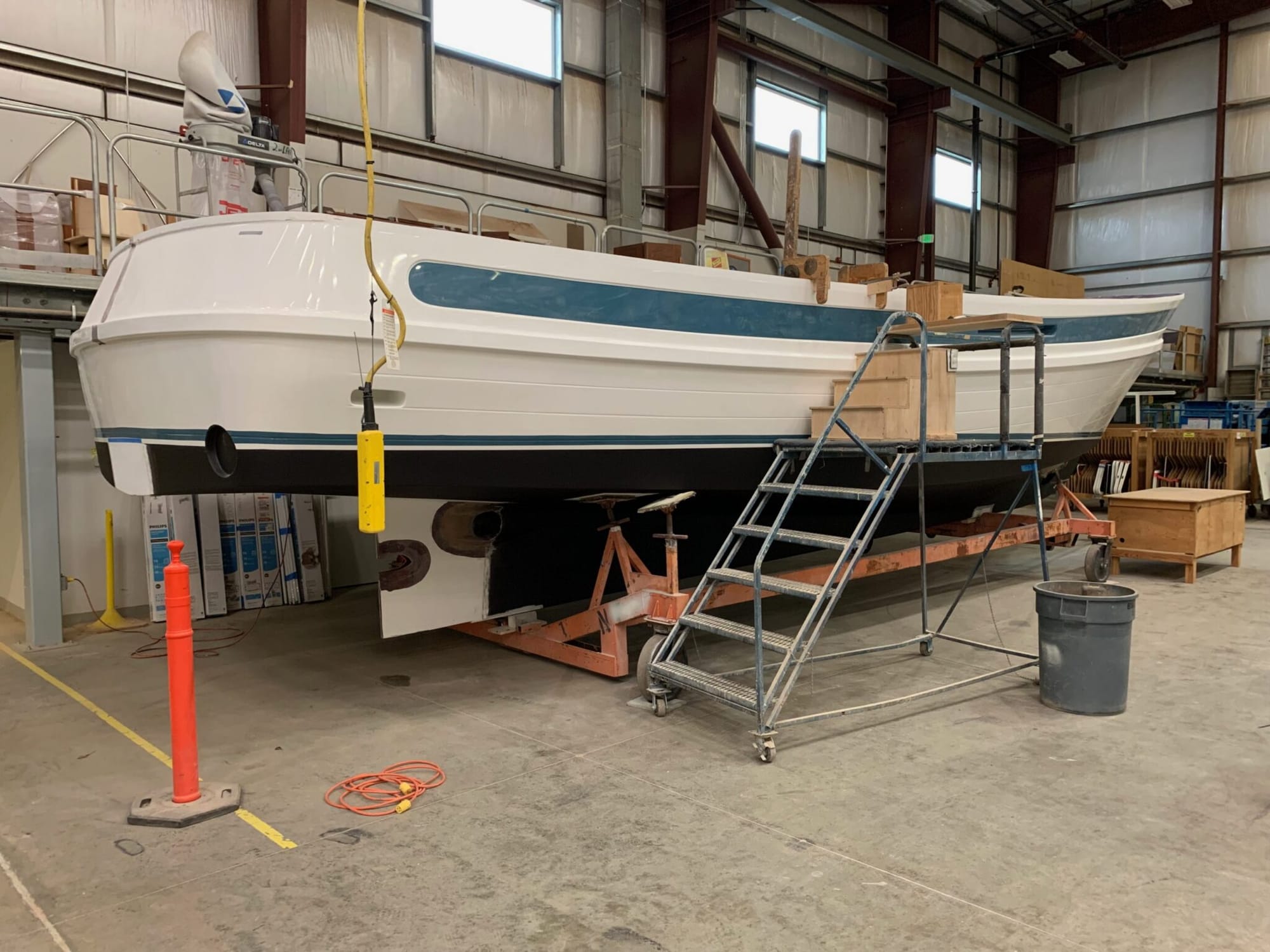
In the past month it’s become apparent that delivery is not likely to be on time. Small parts are not a problem but Cummins has yet to deliver the engine. Labor is also short and competition for good craftspeople is fierce. There are a lot of boat builders in

In the past month it’s become apparent that delivery is not likely to be on time. Small parts are not a problem but Cummins has yet to deliver the engine. Labor is also short and competition for good craftspeople is fierce. There are a lot of boat builders in the area.
We’ll see how it turns out. Maybe April, maybe May. I hope not later than that because we would really like to arrive by sea at Yellow Point Lodge on Vancouver Island in late June.
Since I last wrote, Étude has moved from the building where her parts were cast and is now in the building where everything else happens. At first glance, it’s hard to see that anything much has changed. They’re laying the groundwork, so to speak, for installing wiring, tanks, insulation, and so on.
Here’s a look inside the hull. The white “paper” will eventually be removed. It’s to protect the hull from people walking on it. The entirely white area between the first and second bulkheads (“dividers”) is where the engine will go. The large area aft of that will hold the two fuel tanks, the muffler, the heating system, the hot water tank and the watermaker. The aft area will hold the fresh water tank and is otherwise available for storage.

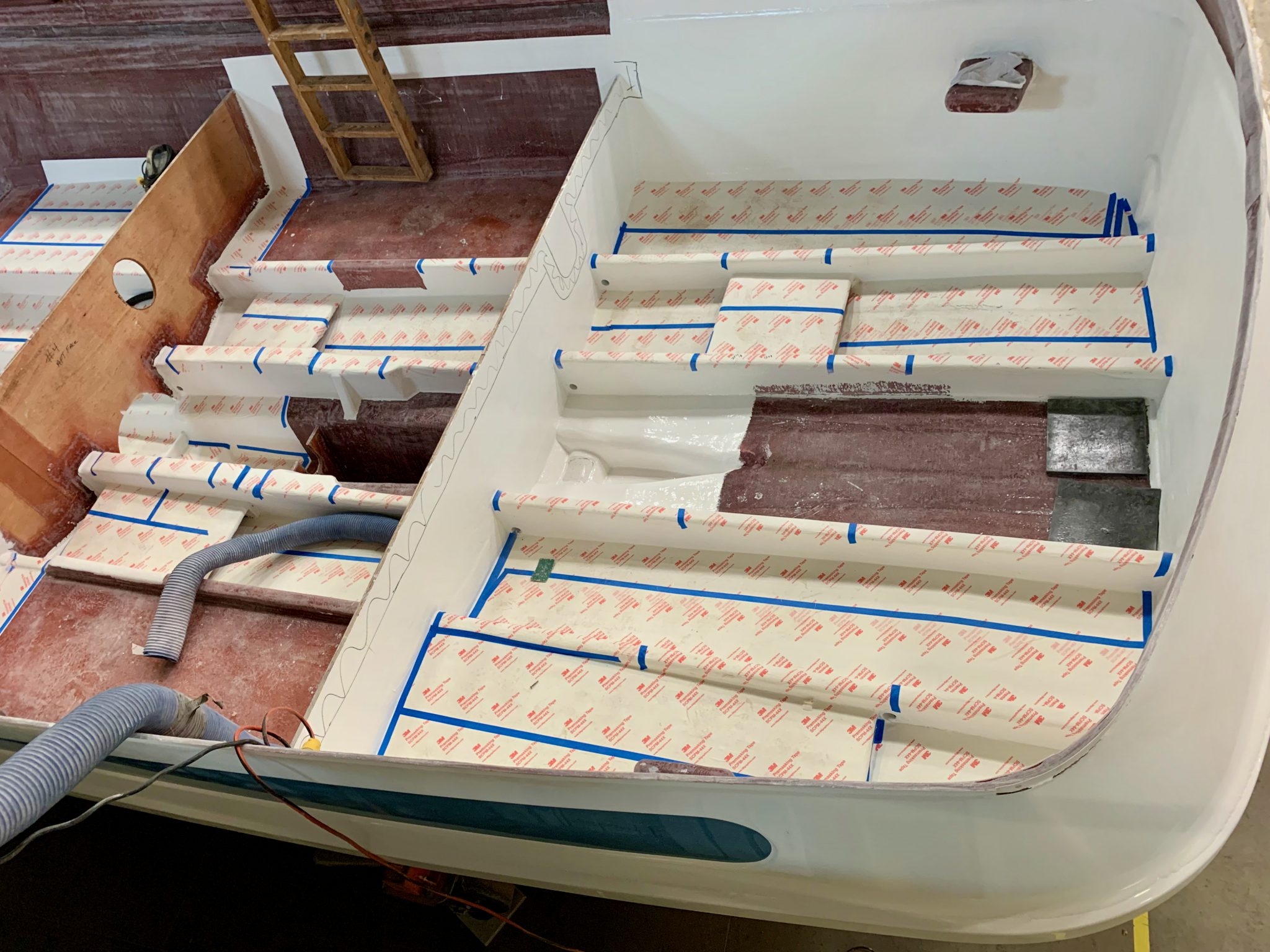
The roughly triangular area at the bow will be the chain locker. This is where the anchor chain (called the “rode”) goes when the anchor is hauled in. The line of rectangular pads low on the starboard side will have plastic guides screwed in to hold bundles of wires.

If you look carefully at the bow, you can see where the two halves of the hull were glued together. I call it “glue”, but I’m sure there’s a more precise term. This seam will be smoothed and polished, then covered with a rubber protective strip.
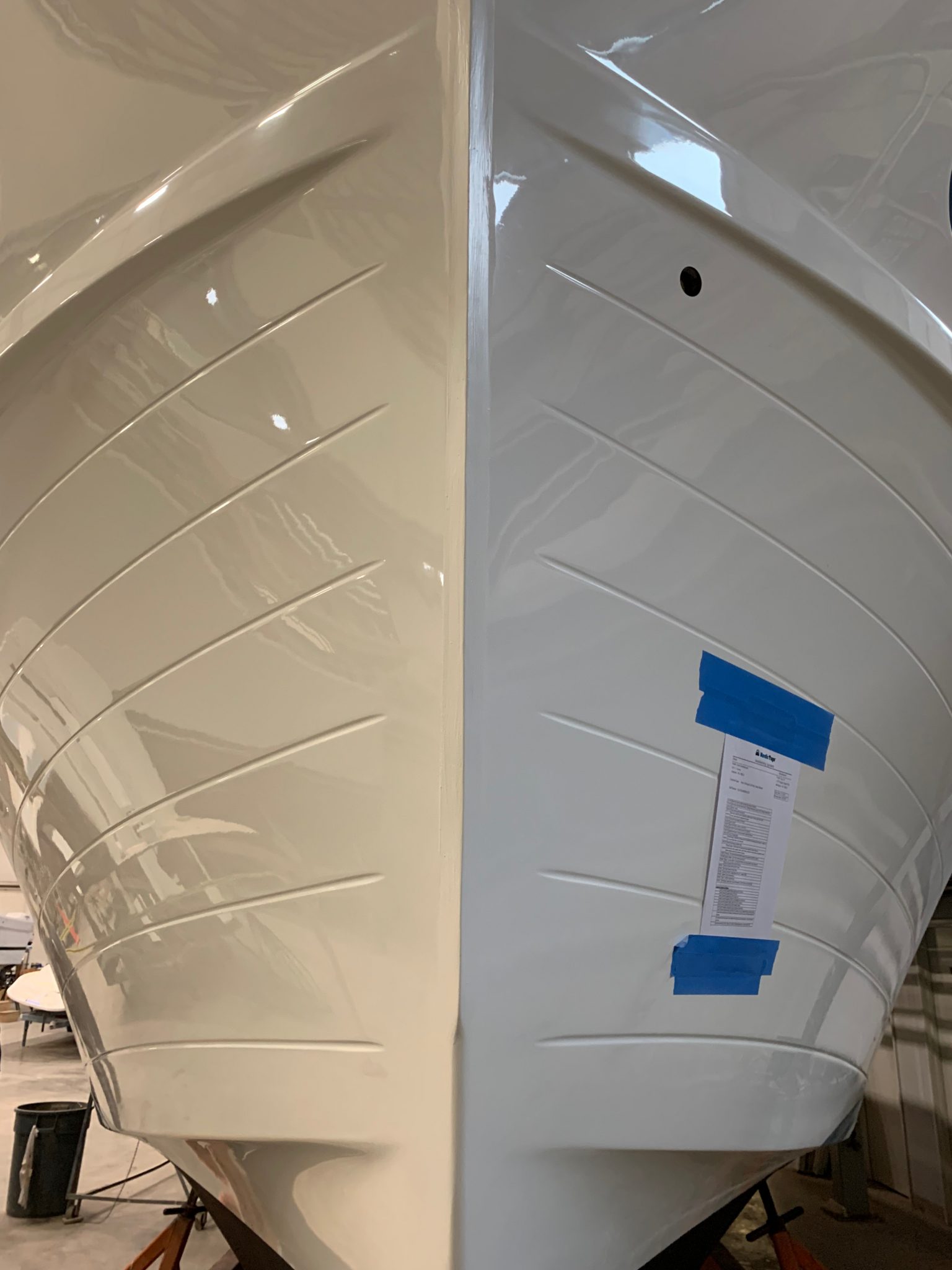
Here’s a look at the holes that will eventually contain the bow and stern thrusters. If you imagine a small propeller facing you that can turn in either direction, you will understand thrusters.
The oddly shaped hole aft of the stern thruster is where the propeller shaft will exit the hull.


Here’s the top piece. There’s not a lot going on here yet. You can see where the chain locker will be at the bow. The forward two portholes are in the master berth and the aft one in the guest berth. The two rectangular holes are for hatches to provide light and air to the berths. This piece will eventually be attached to the hull with a very strong, essentially unbreakable, “glue”.
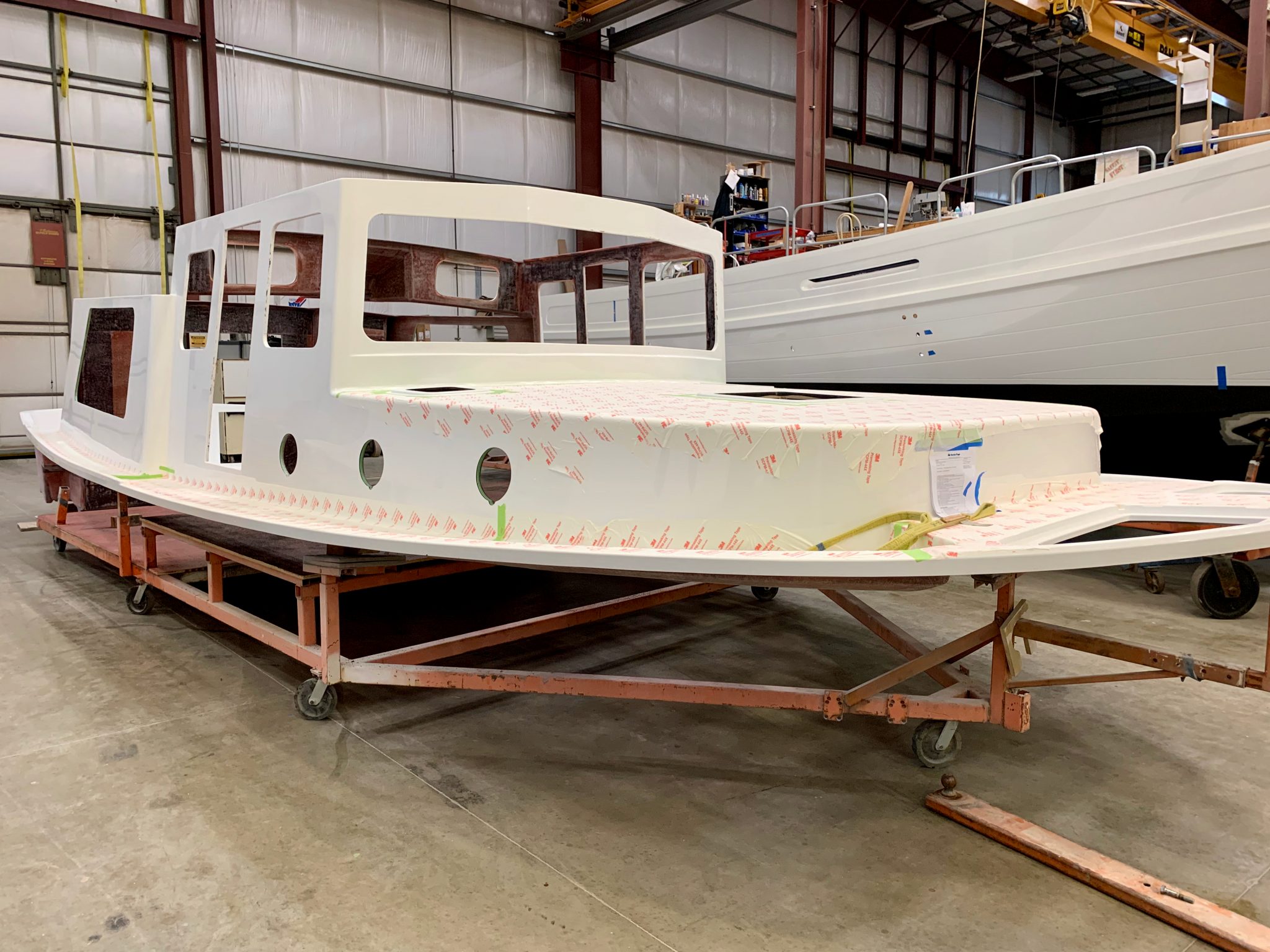
The “hot tub” at the stern is the “cockpit”, an outdoor area used for socializing, dinghy access and so on. There will eventually be a hinged door in the hull leading to the starboard side of the cockpit. The cockpit sits above the lazarette. That’s the aft storage area of the hull that holds the fresh water tank. There’s an access hatch in the sole (floor) of the cockpit.
On the port side you can see the locker that will hold the propane tanks and serve as a base for stairs leading to the top of the saloon (pronounced “salon”).
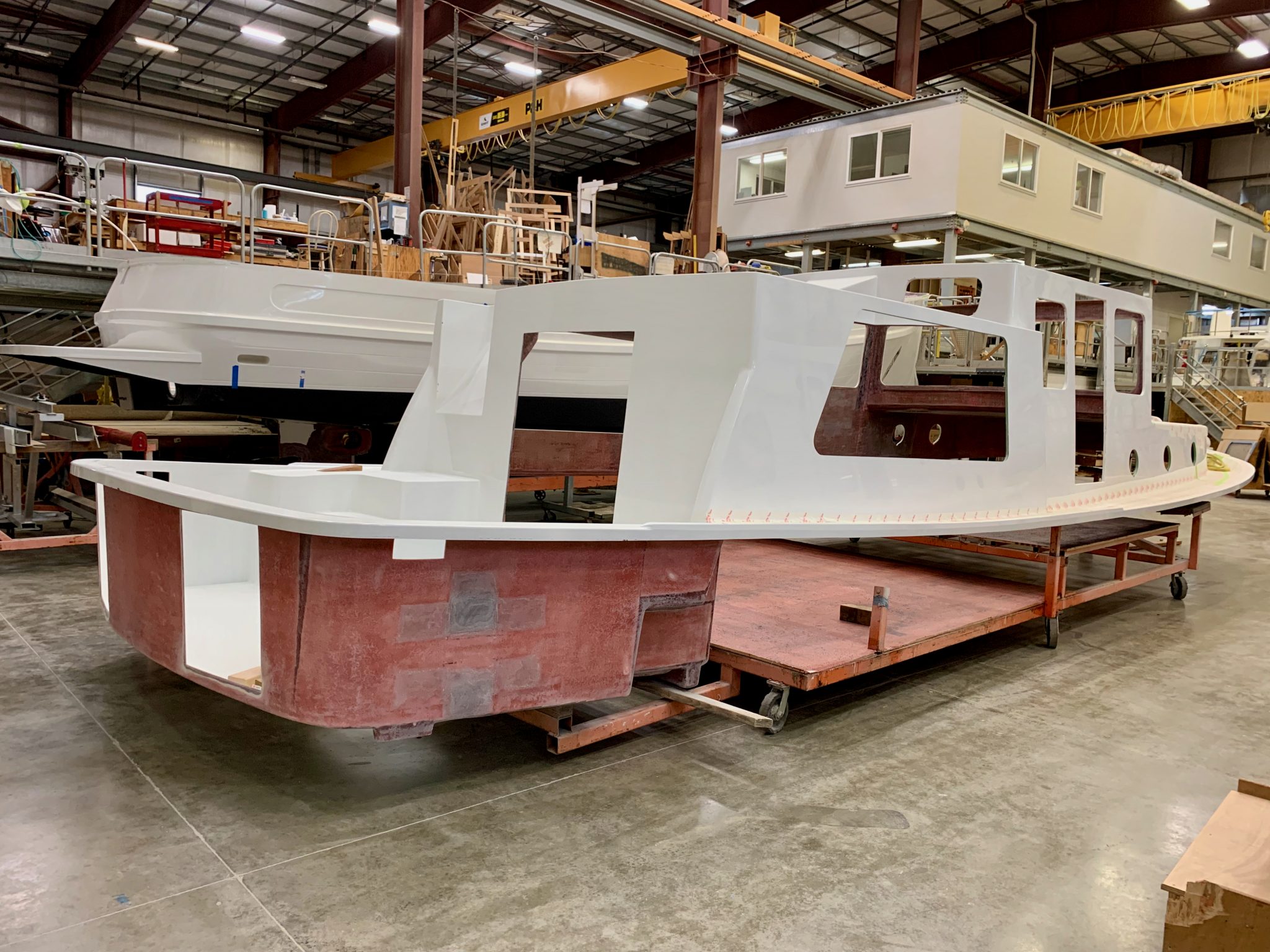
This piece will be the saloon’s sole, the stairs up to the pilothouse, and the pilothouse sole. The rectangular hole will give access to the area holding the watermaker, fuel tanks and so on. The cutout to starboard of the stairs will hold the refrigerator.
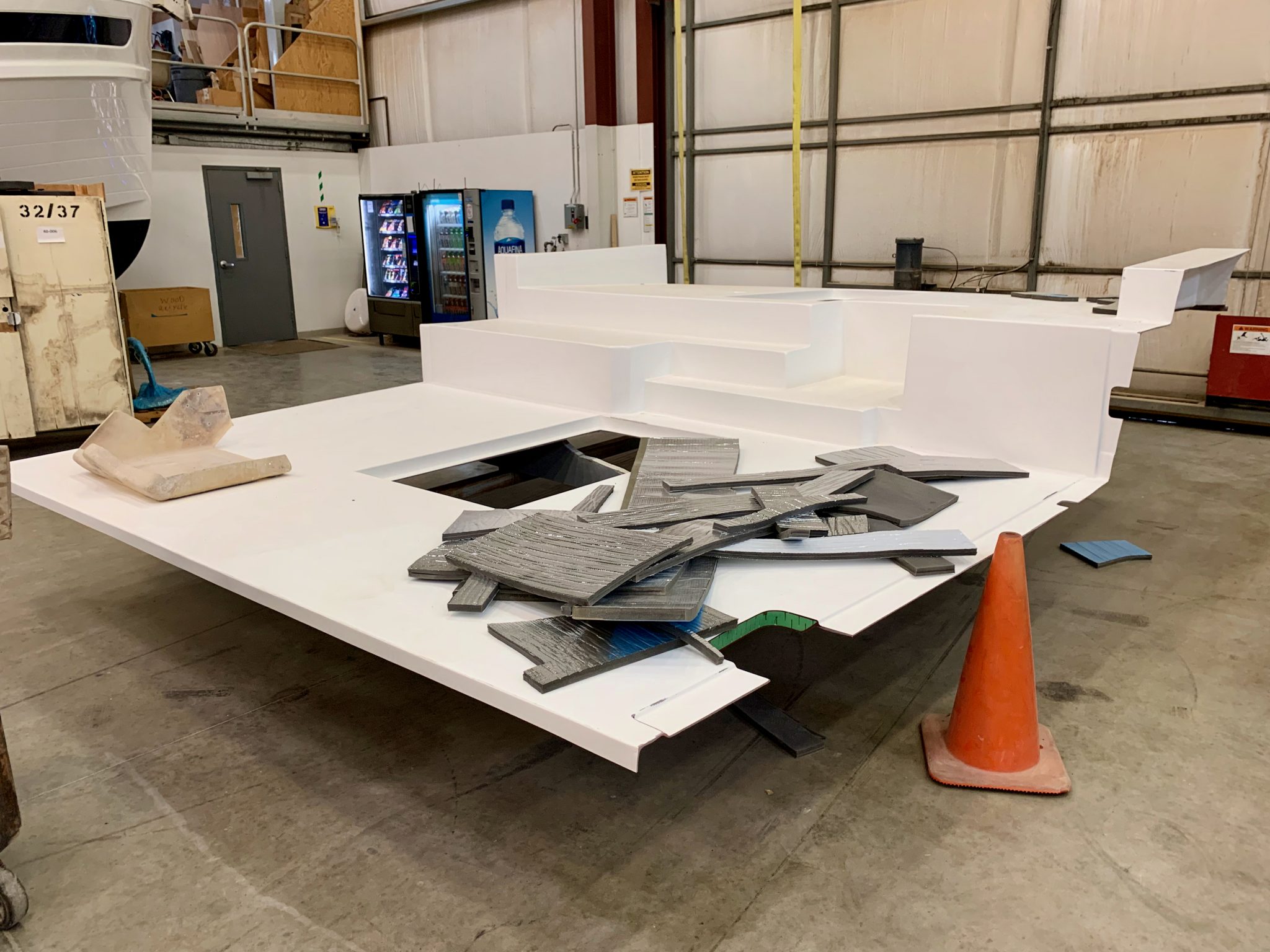
Construction has begun on the wooden modules that will make up the berths, head and so on. This photo is a close-up taken of the wood used to make the modules.
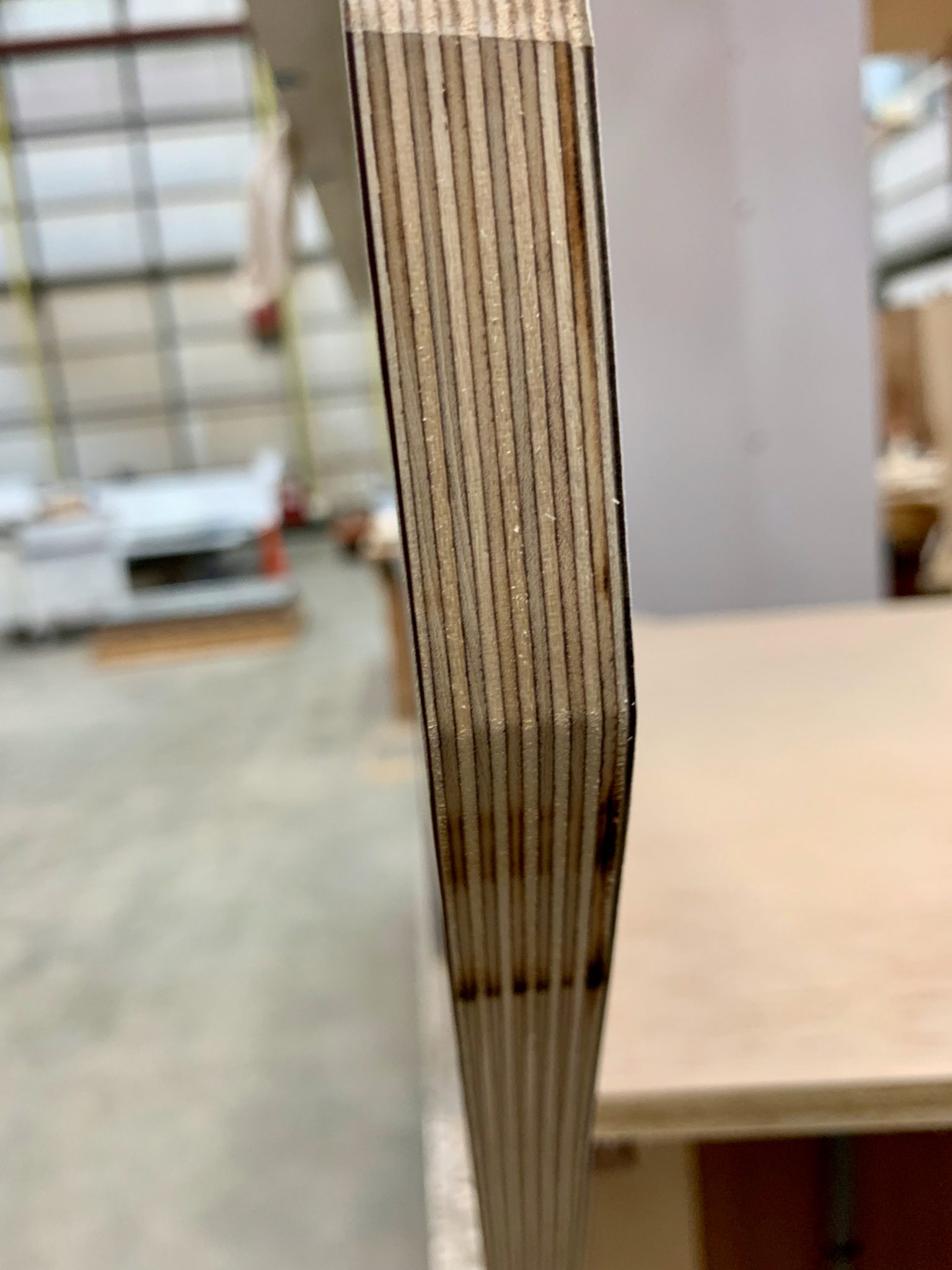
This ugly photo won’t win any awards. I took it to show that there are two more pieces to Étude’s top section. The roof will be permanently “glued” above the saloon. The section above the pilothouse will be attached with a kind of “glue” that allows it to be removed. But not easily. Why might it need to removed? If the engine needed to come out.
You can see these two roof pieces in place on the top section of the boat ahead of us in production. Notice also that the pilothouse door, some grab rails and a saloon window have been installed.
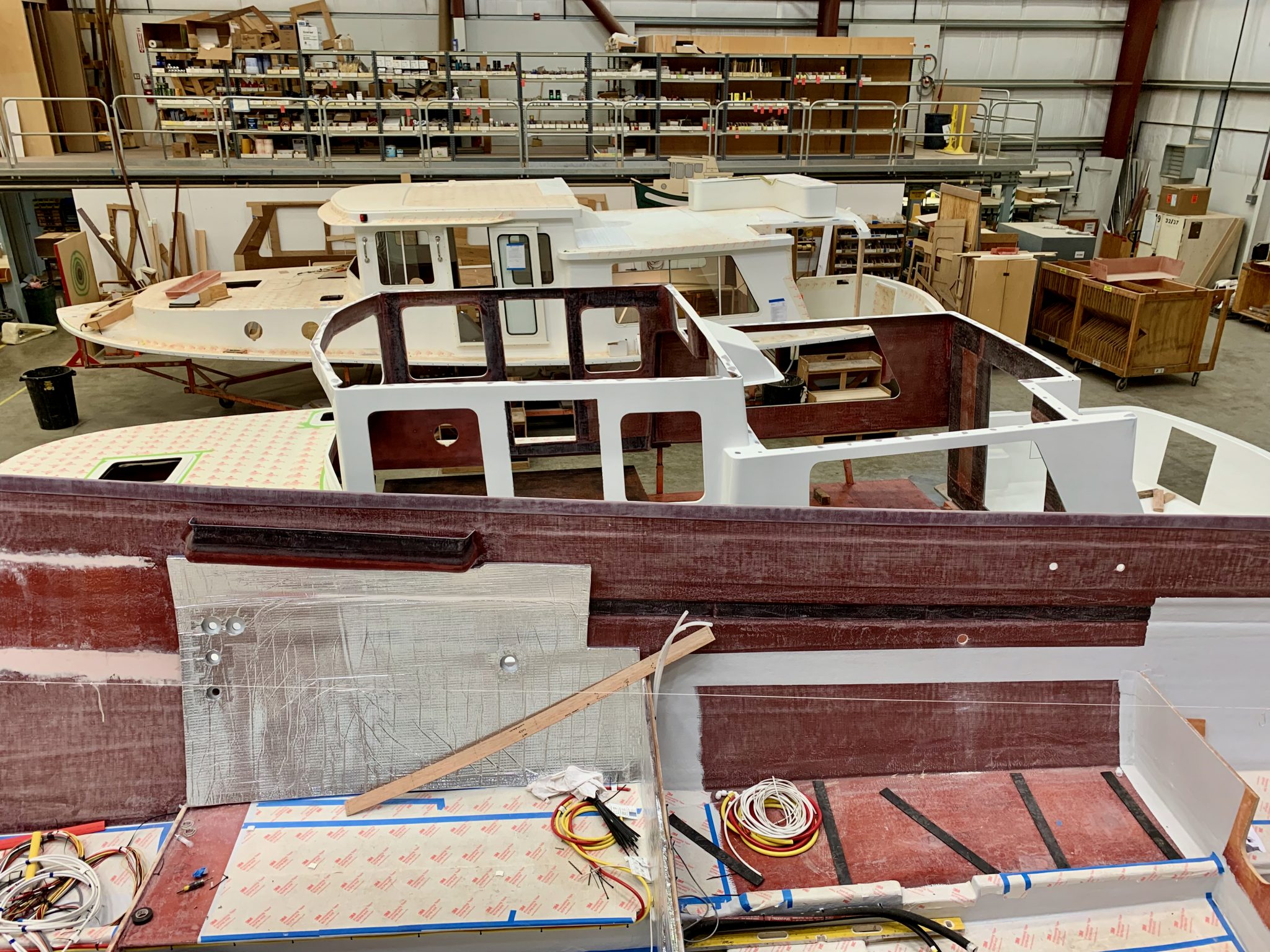
I can’t believe there isn’t a nautical term for “roof”. If you know one, please put it in the comments.
Next: Ètude – Progress At Last